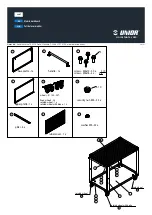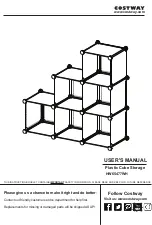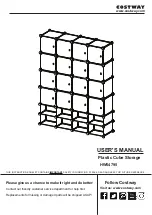
ESS Series
User’s Manual
91
6
Appendix A--- RAID Introduction
6.1
About RAID
RAID is an abbreviation for Redundant Array of Independent Disks.
It is to combine several independent HDDs (physical HDD) to form a HDD group (logic HDD) to
provide more storage capacity and data redundancy. Now it consists of seven levels, ranging
from RAID0 to RAID6.
6.2
RAID Level
RAID
Level
Note
Min Disk
Needed
RAID0
RAID0 is so called Striped Disk Array without Fault Tolerance. It
represents the highest storage performance in RAID level. RAID0 is
to read-write continue data in several HDD. So, system data query will
be performed in several HDDs at the same time.
2
RAID1
It is also called Mirror or mirroring. Its aim is to maximally guarantee
data safety and restorable. RAID1 is to automatically copy user input
data fully to other RAID1 HDDs.
2
RAID3
RAID3 does not backup the storaged data. It saves the data
information on the member HDD of the RAID3 and save the
verification information on the verification HDD of the RAID3. The
verification information and the corresponding data are saved on
different HDDs. When one HDD of the RAID3 is damaged, it can use
the left data and then corresponding verification information to restore
the damaged data. At the same time, the RAID10 has the low storage
space usage rate (50%)as the RAID1.
RAID10
RAID10 assembles RAID0 and the RAID1. It uses the high read/write
speed of the RAID0 and the generally high data protection and
restores capability of the RAID1. These entire make RAID10 has
higher performance and security level.
RAID5
RAID5 does not backup the storage data. Instead, it will memorize
data and corresponding verification information to HDDs of RAID5.
The data and verification information will be backed up in different
HDDs respectively. When data in one of the HDDs is damaged,
system can use the rest data and corresponding verification
information to restore the lost data.
3
RAID6
Based on the RAID 5, the verification disk is two. The data and
verification information will be backed up in different HDDs
respectively. When data in two of the HDDs is damaged, system can
still use the rest data and corresponding verification information to
restore the lost data.
4
RAID50
RAID50 assembles the RAID5 and the RAID0. It uses multiple-group
RAID5 to form the RAID50 as the RAID0 mode. It can have the high
read/write speed of the RAID0 and it also has the data protection and
restores capability of the RAID5. Comparing with the RAID10,
RAID50 enhance the storage space usage rate. It max supports one
malfunction HDD on each sub-RAID5. It can use the data on other
HDDs to restore the data.
RAID60
RAID60 is based on RAID6,RAID0. Use multiple group of RAID6 to
















































